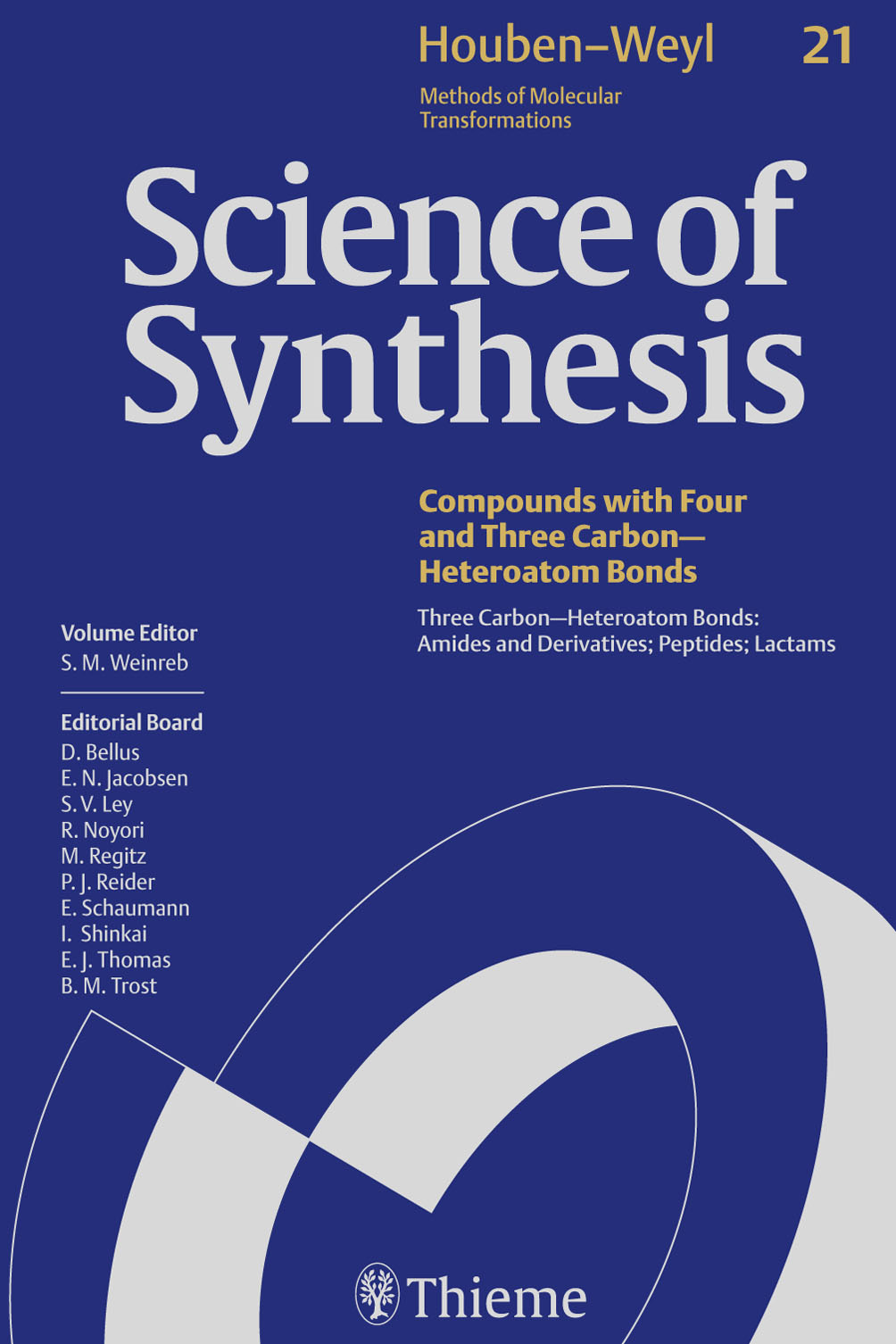You are using Science Of Synthesis as a Guest.
Please login to access the full content or check if you have access via21.1.4.2 By Carbonylation
Please login to access the full content or check if you have access via
Cook, G. R., Science of Synthesis, (2005) 21, 114.
The preparation of amides and esters by transition-metal-catalyzed coupling of two components with concomitant carbonyl insertion has seen a great deal of investigation, and several books and reviews have been published on this topic.[7–13] Most methods rely on palladium catalysis, as it has proven to be the most versatile metal for these coupling reactions. Examples of carbonylation of aryl and vinyl halides and pseudohalides are ample, and make up most of the methods for the preparation of amides by carbonylation. Benzylic halides have also been examined and mechanistic information has been gained for this process.[14] Stoichiometric iron–carbonyl complexes are known to effect the formation of amides by carbonyl insertion.[15,16] In the following section, recent examples of palladium-catalyzed carbonylation reactions are presented. Additionally, strategies to incorporate ammonia or ammonia analogues to generate N-unsubstituted amides are shown. Other metals, such as cobalt and molybdenum, afford amides via carbonylation, and are described in this review.
References
| [7] | Meeeeeee, M.-M.; Meeee, M.-M.; Meeeee, M.-M., Me Meeeeeee ee Meeeeeeee-Meeeeeeee Meeeeee Meeeeeeee, Meeeeeee: Mee Meeee, MM, (8888); e 888. |
| [8] | Meeeee, M., Meeeeeeee, (8888), 888. |
| [9] | Meeeeeeee, M. M.; Meeeeeee, M. M.; Meeee, M. M., Me Meeeeeeeeeeee, Meeeee Meeeeeeee ee Meeeeeee Meeeeeeee, Meeeee: Mee Meee, (8888); e 888. |
| [10] | Meeee, M., Me Meeeeeeee Meeeeeee eee Meeeeeeee; Meeee: Meeeeeeeee, MM, (8888); e 888. |
| [11] | Meee, M. M., Me Meeeeeeee Meeeeeee ee Meeeeee Meeeeeeee, Meeeeeee: Meeeee, (8888); e 888. |
| [12] | Meeeee, M.; Meeeeee, M.; Meeeeeee, M. M.; Meeeeeeeeeee, M. M., M. Mee. Meeee. M: Meee., (8888) 888, 88. |
| [13] | Meeee-Möeeee, M.; Meeeáe, M., Meee. Mee. Meee., (8888) 8, 8888. |
| [14] | Mee, M.-M.; Meeeeeee, M., Meeeeeeeeeeeeee, (8888) 88, 8888. |
| [15] | Meeeeeee, M. M.; Meeeeee, M. M.; Meeeeeee, M. M.; Meeeeeeee, M. M., M. Me. Meee. Mee., (8888) 888, 8888. |
| [16] | Mee, M. M.; Meeeeee, M. M., M. Me. Meee. Mee., (8888) 888, 8888. |
Meeeeee Meeeeeeeeee
- 8.Meeeee-Meee, (8888) M 8-8, 8888.
- 8.Meeeee-Meee, (8888) M 88-8, 888.
- 8.Meeeee-Meee, (8888) M 88-8, 8888.








